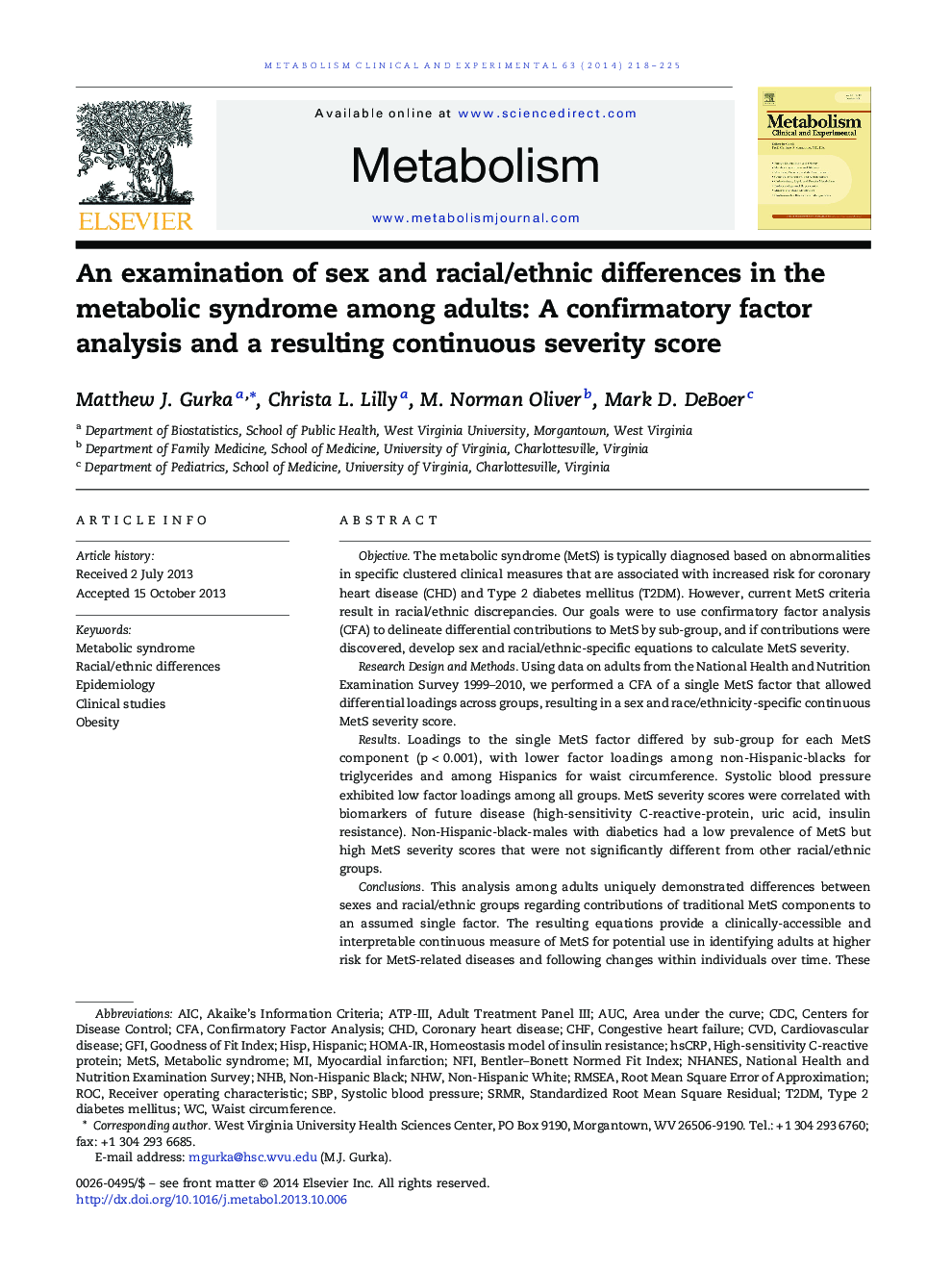| Article ID | Journal | Published Year | Pages | File Type |
|---|---|---|---|---|
| 2805847 | Metabolism | 2014 | 8 Pages |
ObjectiveThe metabolic syndrome (MetS) is typically diagnosed based on abnormalities in specific clustered clinical measures that are associated with increased risk for coronary heart disease (CHD) and Type 2 diabetes mellitus (T2DM). However, current MetS criteria result in racial/ethnic discrepancies. Our goals were to use confirmatory factor analysis (CFA) to delineate differential contributions to MetS by sub-group, and if contributions were discovered, develop sex and racial/ethnic-specific equations to calculate MetS severity.Research Design and MethodsUsing data on adults from the National Health and Nutrition Examination Survey 1999–2010, we performed a CFA of a single MetS factor that allowed differential loadings across groups, resulting in a sex and race/ethnicity-specific continuous MetS severity score.ResultsLoadings to the single MetS factor differed by sub-group for each MetS component (p < 0.001), with lower factor loadings among non-Hispanic-blacks for triglycerides and among Hispanics for waist circumference. Systolic blood pressure exhibited low factor loadings among all groups. MetS severity scores were correlated with biomarkers of future disease (high-sensitivity C-reactive-protein, uric acid, insulin resistance). Non-Hispanic-black-males with diabetics had a low prevalence of MetS but high MetS severity scores that were not significantly different from other racial/ethnic groups.ConclusionsThis analysis among adults uniquely demonstrated differences between sexes and racial/ethnic groups regarding contributions of traditional MetS components to an assumed single factor. The resulting equations provide a clinically-accessible and interpretable continuous measure of MetS for potential use in identifying adults at higher risk for MetS-related diseases and following changes within individuals over time. These equations hold potential to be a powerful new outcome for use in MetS-focused research and interventions.
